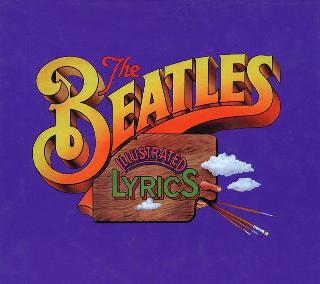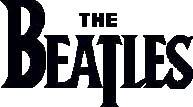Index
Home
Vorige
Help!
Composer(s) : Lennon and McCartney
Year : 1965
Chords/Tabs: Help!
Notes On "Help!" (H)
Copyright 1989 Alan W. Pollack
All Rights Reserved
With "Help!", let's take a look at a couple of details in the harmony as
well as a glance at the overall form.
Harmonic Details
"Help!" is in the key of A but it's the G Major chord that calls for our
analytical attention. The G chord appears repeatedly in this song, alternately
serving two unrelated purposes; sort of like a character actor filling two
different roles in the same play.
In the verse, the G chord appears as a garden variety flat-VII "aeolian
cadence":
A ->c# ->f# ->D ->G ->A
A: I iii vi IV flatVII I
However, in both the intro and the refrain, the G chord serves a more subtle
purpose; in the final analysis (ugh!) I'm not even sure what Roman numeral
to give it, or whether to give it one at all.
The chord progression of the intro is a classic harmonic example of starting
a piece out in left field; "classic" in the sense that early Romantic
song writers like Schubert and Schumann loved this gambit. At what point
in "Help!" do you know for sure what key we're in ? Below are some of the
ways in which I believe the opening chords can be heard; I think that
several of the possibilities below are quickly rejected in retrospect
by the ear but I list them all to underscore the ambiguity.
b ->G ->E ->A
is it b: i VI V-of-flat-VII, huh ???
*or*
g: iii I V-of-ii, huh ???
*or*
D: vi VI V-of-V V, maybe ???
*Actually* it's
A: ii flat-VII V I
This is more than just mental gymnastics on paper. Try and put yourself
in a frame of mind as though you're hearing this for the first time (try!),
and play it out "Name That Tune" style, dealing out one chord at a time. Ask
yourself at each step, "what key am I in", "where am I heading ?" I think
you'll get the picture.
I think one isn't certain of the key being A until the verse actually begins;
the possibility of the A at the end of the intro actually being a V which will
go the the D as the I chord is very real to the ear.
Once you get used to this progression I believe you hear the overall motion
as being from the ii->V->I; a nice subdominant->dominant->tonic cadence.
But what of the G chord ? I put a flat-VII under it but I don't hear it
that way at all in this context; flat-VII is a surrogate dominant (V-like)
function. What I hear in this context is more of a hard to pigeon-hole
"filler" chord between the ii and the V. What makes it work is the
contrapuntal movement in the outer voices:
Top: F# ->G ->G#
Bottom: B ->A ->G ->F# ->E
A: ii ?? V
Scale-wise motion, particularly in a bassline or particularly when any
line moves chromatically as the top line does here, can make the ear
follow and "accept" some of the craziest chord progressions. In music
of the late nineteenth century (for examples see Chopin or Wagner) this
technique could be extended through very long passages creating a
rather floating tonal experience. Our example from "Help!" is a very
tiny example of this technique -- it extends over only three chords,
the outer two of which are clear tonal anchors like the towers of
a suspension bridge. If you'll allow me to quickly change metaphors yet
again, I like to think of that G chord here making a harmonic "pleat"
between it's two neighboring chords.
It's a very pleasing effect; given that the harmonic rhythm is rather
slow throughout, this unusual chord progression which is repeated four times
in the course of the song is a conspicuous touch which adds a much needed
feeling of forward and outward movement.
Two other unrelated harmonic details I can't resist passing by:
I always hear the final phrase of the refrain as follows; there's a V chord
on the word "help" which, though not on the rhythm track, is strongly implied
by the voices:
Won't you PLEASE please help me
E A (E) A
A: V I (V) I
This pattern is changed in the final refrain and made into a beautiful
example of a deceptive cadence, in pure Bach style; i.e., the word "me"
in the final refrain is given an f# (vi) chord. As in all such cadences,
thing are quickly put "right" in the following and final phrase.
And that brings me to the second detail -- the final chord of this song
is yet another added sixth chord. In contrast to the splat-like attack
on this chord at the end of "She Loves You", the boys use it in "Help!"
with great subtlety; the plain A chord is given on the down beat, and
the sixth is added as a melodic neighboring tone, off the beat, in
falsetto voice on the phoneme "Ooh"; but you already knew that :-).
Overall Form
Help! has an unusually flat floor plan:
----- 3X ------
Intro - Verse - Refrain - Coda
There are a couple of details which help offset the deadly monotony of this:
- there's the effect created by the chromatic chord progression already
described above.
- the lyrics of the three verses create an A-B-A pattern
- the instrumental arrangement provides a dramatic and welcome lightening
of the texture at the beginning of the last verse.
But I'd argue that this small amount of relief is frankly not enough to
dispell an overall closed, static feeling in the song created by the
following factors:
- the harmonic rhythm is fairly slow and unvarying throughout. In the
verse, except for the phrase "help in any way" where the chords change
twice within a measure, the rest of the chords last two whole measures
each. In the refrain, the chords last four measures each!
- the 16 measure verse is built out of a musically identical repetition
of the same 8 measures.
- the harmony from an architectural viewpoint, is unrelievedly in one
key (A) throughout. In spite of the nice effect with the G chord, the
refrain provides no relief in terms of excursion or flirtation with
a different key. (By contrast, think about the space opened up by
the middle eight of a song like "From Me To You.")
All this is not to say that "Help!" is ineffective or unsuccessful; common
sense and experience tells us you don't need to be versed in music theory
to recognize a great song when you hear it; right!?
If anything, I find myself pondering that perhaps, this unusual unrelieved
closedness is intentional and actually part of what makes the impact of the
song so strong. The music underscores the single-mindedness of the message
contained within the lyrics; shades of "got no time for trivialities"
from a different song of the same composer.
Regards,
Alan (awp@mirror.tmc.com)
---
"They tried to fob you off on this musical charlatan,
but *I* gave him the test." 070989#6
Ook op Help!:
Ook op 1962-1966:
Ook op 1:
Ook op Love:
(c) 2024 Serge Girard


 (c) Alan Aldrigde, The Beatles Illustrated Lyrics
(c) Alan Aldrigde, The Beatles Illustrated Lyrics